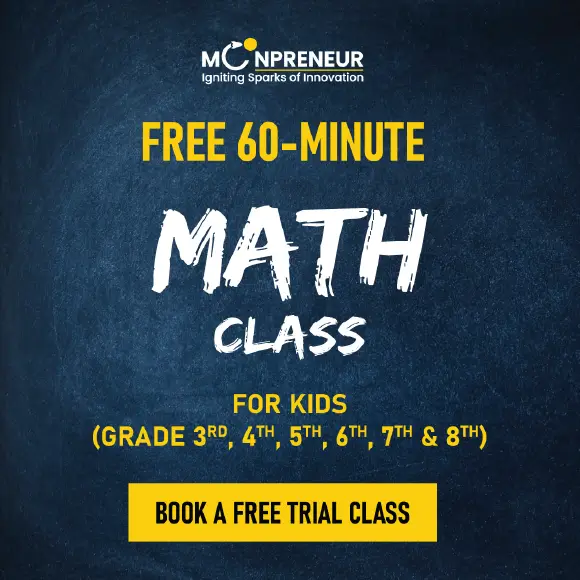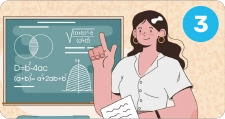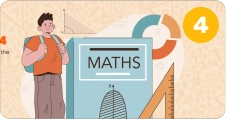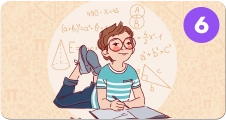Mathematics education is crucial in shaping students’ analytical and problem-solving skills worldwide. Singapore and Russia are two countries that have long been known for their robust math education systems. Even both countries have gained international recognition for their exceptional mathematics programs.
While both nations have produced outstanding mathematicians and achieved remarkable success in various mathematical competitions, their approaches to teaching math differ significantly. In recent years, both Singapore math and Russian math have been popular in the United States.

Source: Math seed
This graph represents the score of fourth-grader students from different countries in TIMSS 2011.
In this blog, Moonpreneur will discuss the differences and similarities between Singapore and Russian math while shedding light on their unique methodologies and educational philosophies.
Recommended Reading: 5 Fun Ways to Turn every child into a “Math Person”
Singapore Math:
Conceptual Understanding:
One of the fundamental principles of Singapore math is the emphasis on conceptual understanding. The curriculum focuses on building a solid foundation by ensuring students grasp the underlying concepts and principles of mathematics before moving on to complex problem-solving.
Concrete-Pictorial-Abstract Approach:
Singapore math utilizes a concrete-pictorial-abstract (CPA) approach to facilitate learning. Students start with hands-on experiences using physical objects, then transition to visual representations, such as diagrams or bar models, before finally working with abstract symbols.
This approach allows students to visualize and understand mathematical concepts more tangibly.
Recommended Reading: Math Anxiety: Symptoms, Causes, and How To Overcome
Problem-Solving Techniques:
Problem-solving is a core component of Singapore math. Here students are taught to use various techniques, like model drawing, to break down complex problems into manageable parts and have a better understanding.
This approach nurtures critical thinking skills and promotes the application of mathematical concepts in real-life situations.
Russian Math:
Emphasis on Rigor and Logical Thinking:
Russian math education places a strong emphasis on rigor and logical thinking. The curriculum aims to develop student’s analytical and problem-solving abilities by presenting them with challenging mathematical problems requiring deep thinking and reasoning.
Deductive Reasoning and Proof:
In Russian math, deductive reasoning and proof play a significant role. Students are encouraged to explore theorems and mathematical concepts by providing logical justifications and proofs. This approach fosters a deeper understanding of mathematical principles and cultivates a strong mathematical mindset.
Depth over Breadth:
Russian math focuses on depth rather than breadth. The curriculum delves into each topic extensively, covering it in great detail before moving on to the next. This allows students to understand mathematical concepts and build a strong foundation for advanced mathematics.
Differences between Singapore Math and Russian Math:
Pedagogical Approach:
While Singapore and Russian math aim to develop critical thinking and problem-solving skills, they employ different pedagogical approaches.
Furthermore, Russian math challenges students with complex problems from the start, encouraging them to think deeply and critically. Singapore math, on the other hand, focuses on a step-by-step progression of skills, ensuring students master each concept before moving forward.
Conceptual Understanding:
Singapore math focuses on building a strong foundation through conceptual understanding before tackling complex problem-solving.
While Russian math emphasizes rigor and logical thinking, encouraging students to explore theorems and provide rational justifications and proofs.
Curriculum Structure:
The curriculum structures of Singapore math and Russian math also differ. Singapore math follows a spiral approach, revisiting and reinforcing topics over time to ensure mastery.
In contrast, Russian math adopts a linear approach, sequentially covering topics with increasing difficulty.
Teaching Tools:
Singapore math utilizes a concrete-pictorial-abstract approach, starting with hands-on experiences and visual representations before working with abstract symbols.
In contrast, Russian math relies heavily on logical reasoning, deductive proofs, and theoretical exploration of mathematical concepts.
Problem Complexity:
Singapore math begins with simpler problems and gradually increases the complexity as students progress.
But Russian math challenges students with complex and thought-provoking problems from the start.
Similarities between Singapore Math and Russian Math:
High Standards and Rigor:
Singapore and Russian math uphold high standards and rigor in their curriculum. They challenge students to think critically, solve complex problems, and develop logical reasoning skills.
Both systems have produced exceptional mathematicians who have achieved remarkable success in international mathematics competitions.
Focus on Problem-Solving:
Both approaches place a significant emphasis on problem-solving. They equip students with a toolkit of problem-solving techniques and strategies to effectively tackle various mathematical problems.
International Recognition:
Both Singapore and Russian math have gained international recognition for their success in various math competitions and their effectiveness in developing strong problem-solving skills.
Both approaches are renowned for their achievements in international mathematics competitions and focus on producing exceptional mathematicians.
Conclusion:
Singapore Math and Russian Math follow different approaches to teaching mathematics, each with strengths and ideologies. Despite their differences, both systems have received international acclaim and produced outstanding mathematicians.
Considering the differences and similarities between Singapore Math and Russian Math, educators can adapt their teaching methods to suit students’ needs, foster a love for mathematics and influence analytical thinking skills.
Moonpreneur understands the needs and demands this rapidly changing technological world is bringing with it for our kids. Our expert-designed Advanced Math course for grades 3rd, 4th, 5th, and 6th will help your child develop math skills with hands-on lessons, excite them to learn, and help them build real-life applications.
Register for a free 60-minute Advanced Math Workshop today!

















What is the difference between Russian and Kumon math?
Kumon offers personalized learning plans tailored to individual assessments, while Russian Math programs emphasize a standardized curriculum to develop a solid mathematical foundation and problem-solving abilities.
How is Vedic math different from Russian and Singapore math?
Vedic Mathematics, originating from India, encompasses a range of methods and techniques for swift and precise numerical problem-solving. It incorporates Vedic Sutras, which are shortcut tricks and techniques designed to enhance calculation speed. It is the oldest method of calculation then Singapore and Russian math.
My 11-year-old son is learning Russian math this summer, and the results are pretty good so far. Can’t wait to see his performance in this academic year.
A long read about singapore math but I wonder what is the rank of Singapore in math?
Singapore was ranked No. 1 for mathematics based on the performance of students from 149 secondary schools and 15 private schools, including international schools.